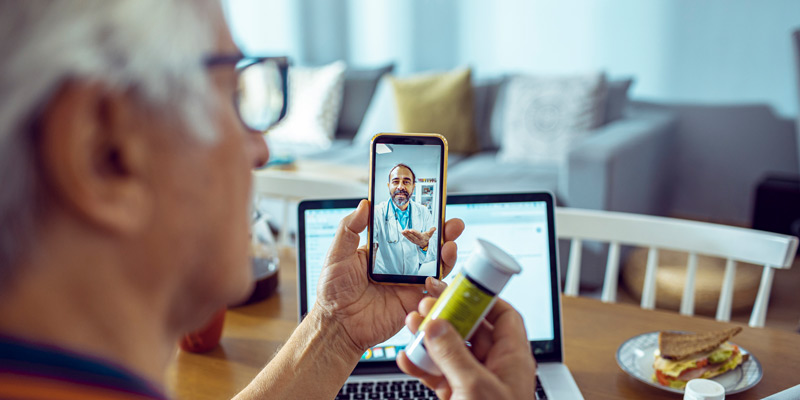
At the beginning of the COVID-19 pandemic, the DEA and all 50 states temporarily suspended safeguards for telehealth treatment for opioid use disorder. This meant that patients struggling with opioid use disorder were able to access much needed treatment without having to see a doctor in person. Out-of-state physicians were even allowed to prescribe medication, a practice typically prohibited by medical boards.
These temporary telehealth expansions eliminated common barriers to addiction treatment, such as a shortage of health care providers, lack of transportation for patients, and a suspended driver’s license. However, because these allowances were tied to state or federal states of emergencies, once states go back to normal, the requirements for seeing a doctor in person in order to obtain a prescription will be reinstated.
The Telehealth Debate
These requirements are necessary to protect against prescription drug abuse, according to some clinicians and regulators. It was lax regulatory oversight in the 1990s that allowed painkiller pill mills to form and flourish, fueling the first opioid epidemic. The opposing argument holds that tightening regulations will make it more difficult for patients to fight their opioid addiction.
This controversy makes virtual prescribing of controlled medication a top telehealth concern, putting policymakers in a corner.
In an NPR article, Courtney Joslin, a resident fellow at the R Street Institute said, “You have people who are really in need of this and telehealth could really help them. On the other end, you do have that hesitancy because of the pill mill problem, previously, [so] you could have some abuse from both patients and providers using telehealth to get controlled substances.”
The Rise of Telehealth
Telehealth is estimated to have grown 38 times since the beginning of the pandemic, leading to numerous state and federal legislative proposals regulating telehealth.
Many policymakers are looking at the data to see what could potentially work long-term. Senator Mark Warner, D-Va said, “We’ve now had 18 months to have telehealth expand dramatically; it would be a huge mistake to roll back that progress. If you cut off that ability to deliver those substances with appropriate protections, you’re really cutting back on the path to recovery for a lot of folks.”
It’s important to note that of the estimated 1,000 telehealth bills recently proposed by state and federal lawmakers, very few mention controlled medications. This is due in part to a 2018 law that directed the DEA to set up a registry of physicians authorized to prescribe regulated drugs using telehealth.
However, two years past the deadline, the database is not up and running. Kyle Zebley, vice president of public policy for the American Telemedicine Association, commented, “The DEA kept on saying they’re going to do that, but there has been no action taken.”
The problem, Zebley says, is “Now we have millions of Americans — so, a huge cohort — that are relying on virtual online prescribing of controlled substances and that will go away. An already heightened opioid and substance use crisis will be significantly exacerbated.”
A Middle Ground
Dr. Anne Lembke, a psychiatrist and professor of psychiatry at Stanford, “wants to see better tools to enable remote monitoring of patient biomedical information, like urine tests and blood pressure,” according to an NPR article. This will help physicians to know who is doing well, and who isn’t.




